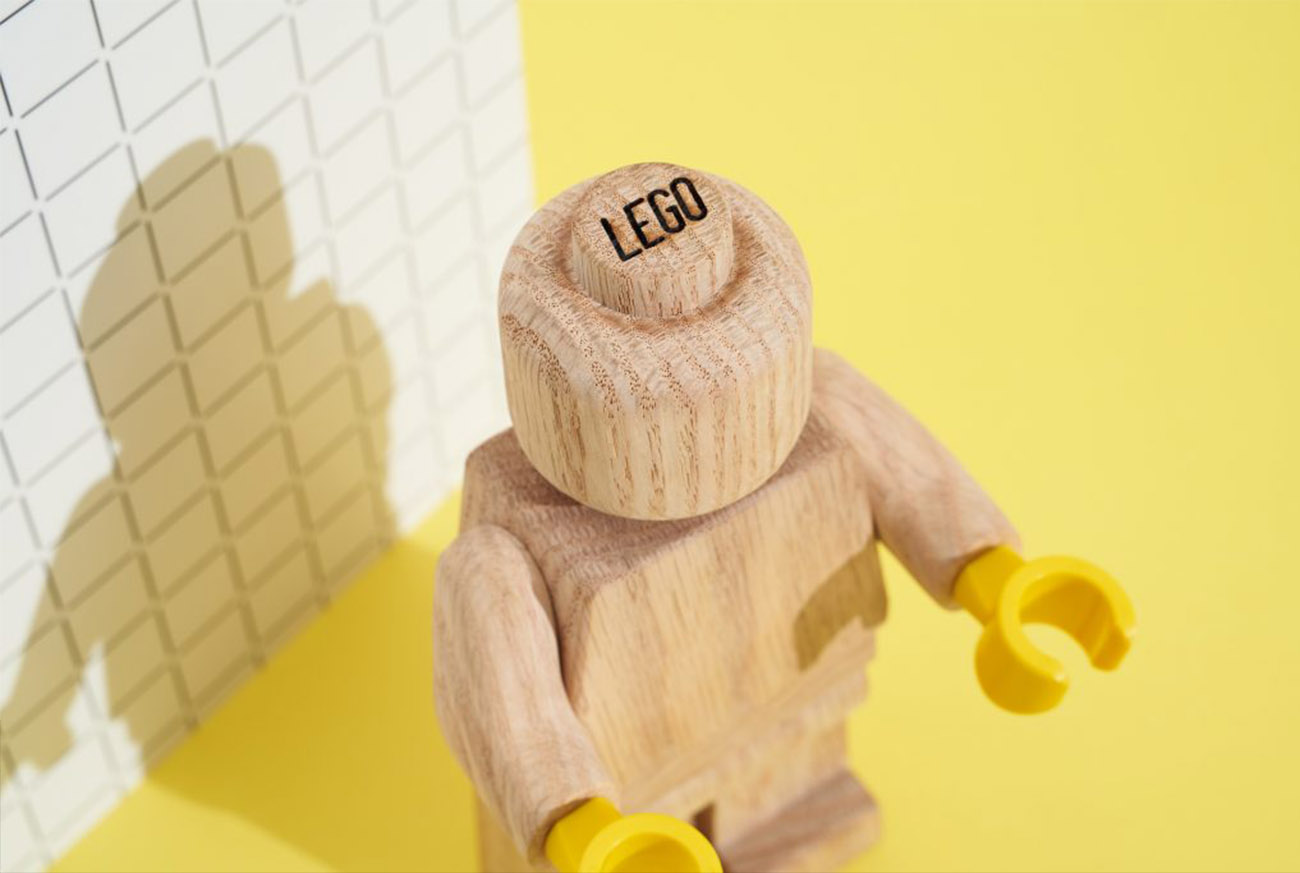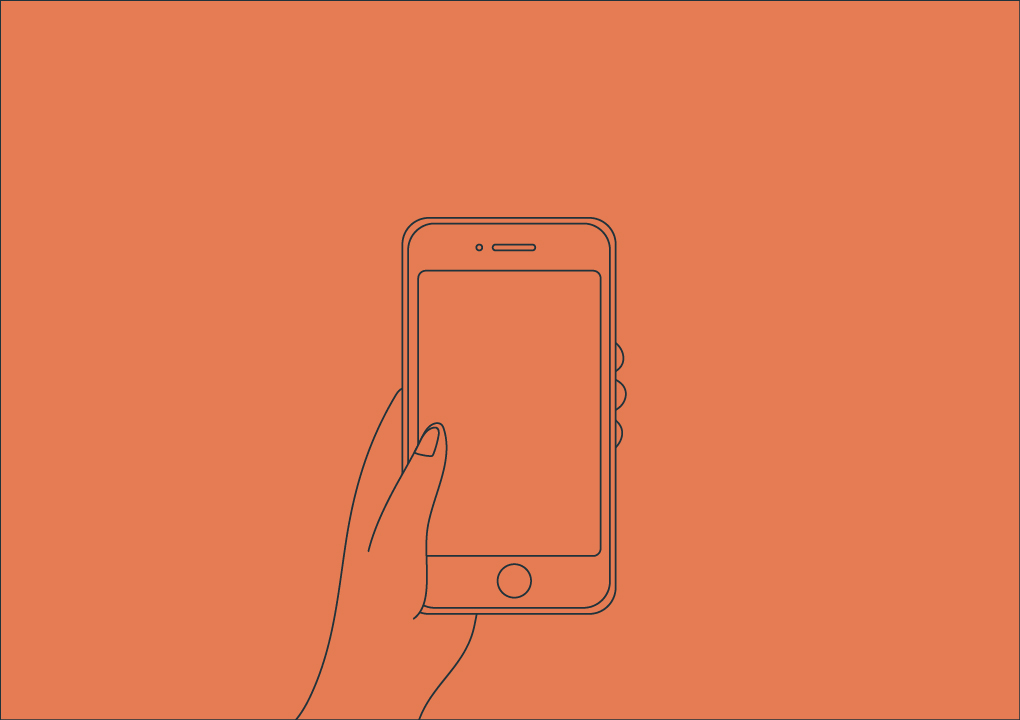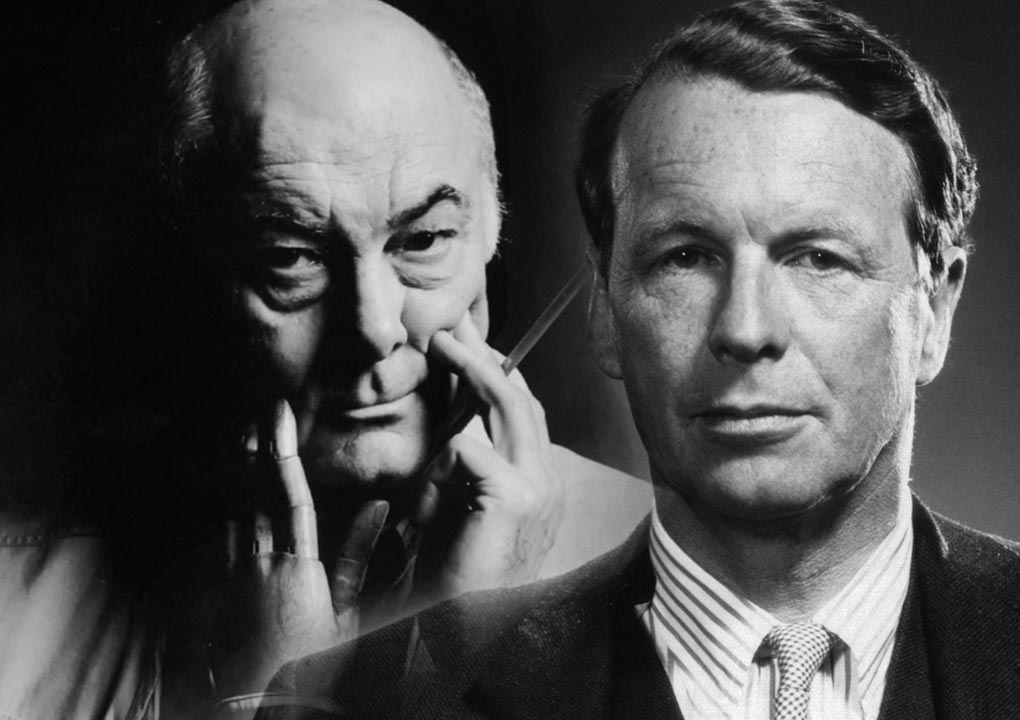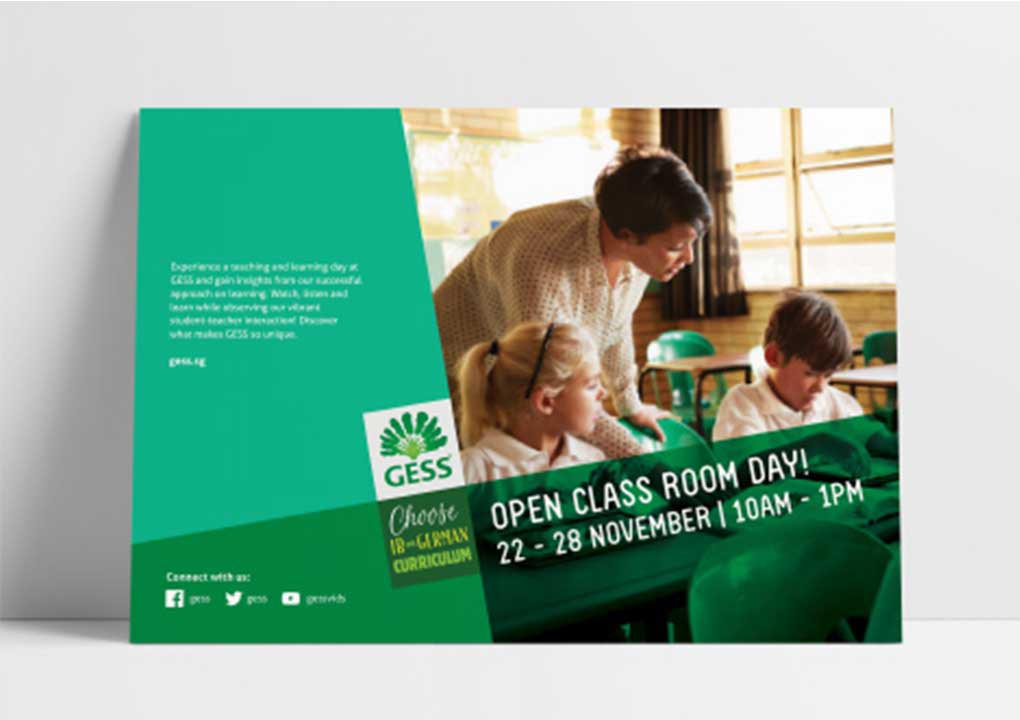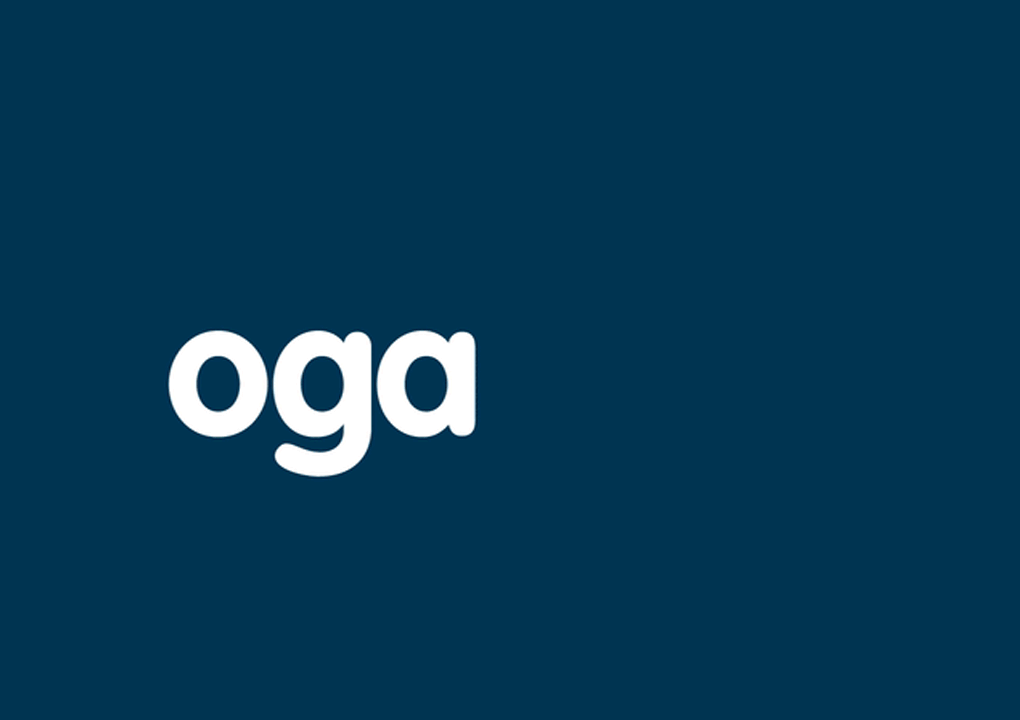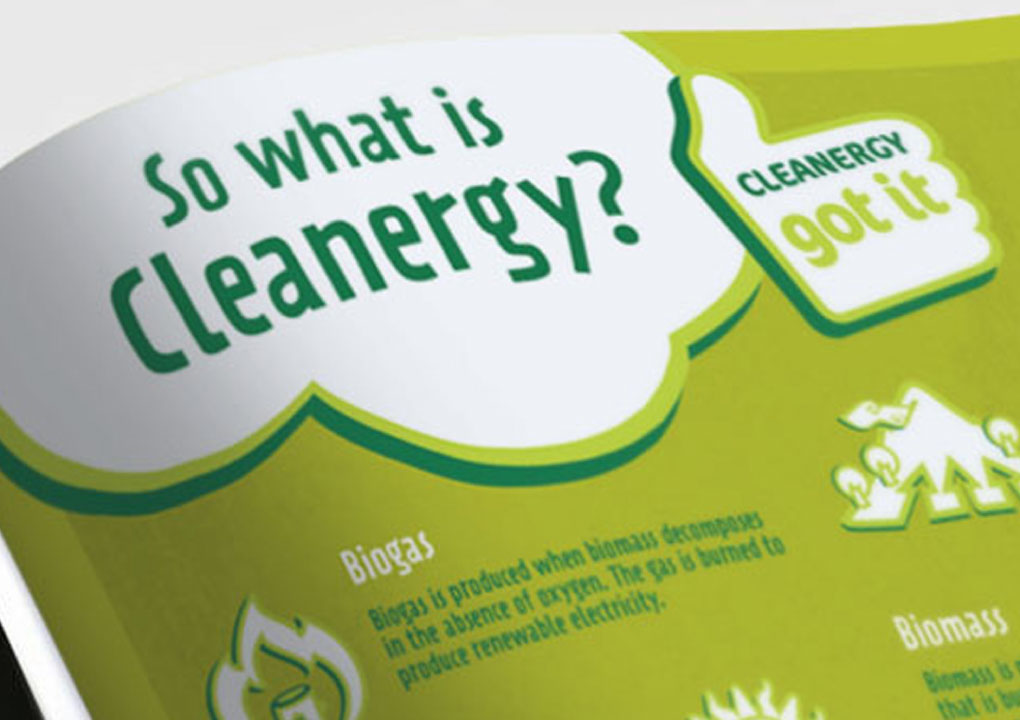This year we’re looking at demographics and how businesses tailor their brands to meet different target audiences preferences.
In this first edition, we’ll use the framework of Gen Z, Gen Y, Gen X, and Baby Boomers to share insights into their very different expectations and characteristics.
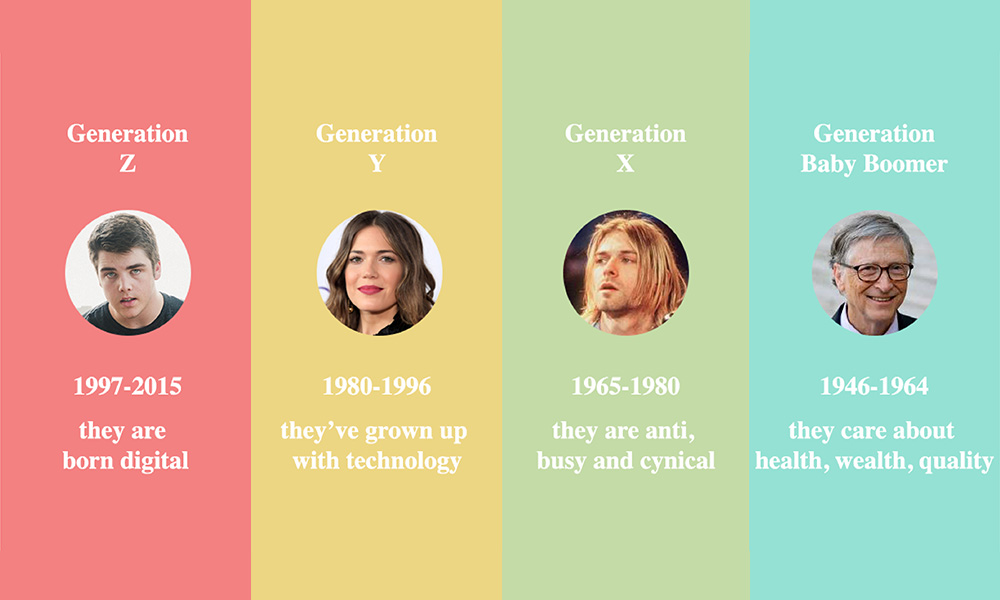
Four Major Generations. Source: Trung Anh Dang
Gen Z
This latest generation was born from 1995 onwards, with the Gen Z (current age, between 5 – 25 years old). Many of them grew up playing with their parents’ mobile phones or tablets, making them the true digital natives who are exposed to the internet, social networks, and mobile systems at an early age.
This generation is also known as the “True Gen”, people who value individual expressions and are always in search of the truth. Such motivations influence the way Gen Zers view consumption and their relationships with brands. Companies should be attuned to three implications for this generation: Consumption as access rather than possession, Consumption as an expression of individual identity, and as a matter of ethical concern.
Consumption means having access to products or services, not necessarily owning them. As access becomes the new form of consumption, people want unlimited access to goods and services, with companies like Grab which provides ride-hailing services and Netflix with its subscriptions for video streaming, creates value. Products become services, and services connect consumers.
Millennials
Millennials, known as Gen Y, were born between 1980 to 1994 (current age, between 26 – 40 years old). This generation had ready access to cutting-edge technology from birth, iTunes, Youtube has taught them that instant gratification was just a download away.
They believe that they are entitled to actualisation and understand brand personalities better than anyone as they have grown up crafting their personal brand identities online on the once prominent social networking platform – Friendster. Social marketing and self-fulfilment is the key to Gen Y.
Gen X
Born between 1965 to 1979 (current age, between 41 – 55 years old). They were raised watching MTV and Star Wars, and are the line between the pre-and-post-digital world. The way to market to Gen X is “anti-marketing”. Less is more for Gen X and they devour information in sound bite-sized chunks.
Baby Boomers
Born between 1944 to 1964 (current age, 56 – 76 years old), Baby Boomers are the biggest consumers of traditional media like television, radio, and newspapers. This generation has begun to adopt more technology by having Facebook accounts in order to stay in touch with family members and reconnect with old friends.
The effective way to sell products and services to this generation is through story form. One thing to consider is creating compelling videos to convey the brand messages and information to them. Use Facebook to reach out to them effectively as baby boomers use Facebook more than other digital platforms.
LEGO – Providing something for everyone to experience joy
One brand that has been effective at targeting all generations is the toymaker LEGO Group, which began in the workshop of Ole Kirk Christiansen (1891–1958), a carpenter from Billund, Denmark. The history of LEGO goes all the way back to 1946 when – against everyone’s objection – Christiansen invested in a newfangled plastic-injection moulding machine to produce toys. Later on, they adapted Croydon-based inventor Hilary Fisher Page’s self-locking bricks – plastic cubes with two rows of four studs to enable stacking. By 1958, they created their “system” and the modern brick design was realised. Christiansen persevered against the odds until his business was a success. Since then, the design of the basic LEGO bricks has remained unchanged.
LEGO had been enjoying success since its founding till about 1998, and had never posted a loss. However, by 2003, sales were down 30% year-on-year and it was $800m in debt. To turn the tables around, LEGO began to diversify its business by producing LEGO shirts, building theme parks, and its own video games, tied in with Star Wars and Harry Potter for their themed kits. From 2008 to 2010, profits quadrupled, outstripping Apple’s. LEGO’s revival has been called the greatest turnaround in corporate history.
Constantly innovating, never compromising – LEGO’s success is due to their resilience and permanent sense of renewal which drove them forward. LEGO transitioned from a child-focused toy company to one that ties itself to our innate curiosity, regardless of age. LEGO provides something for everyone who wants to enjoy building and, in the process, LEGO has redefined what play means and whom it is meant for.
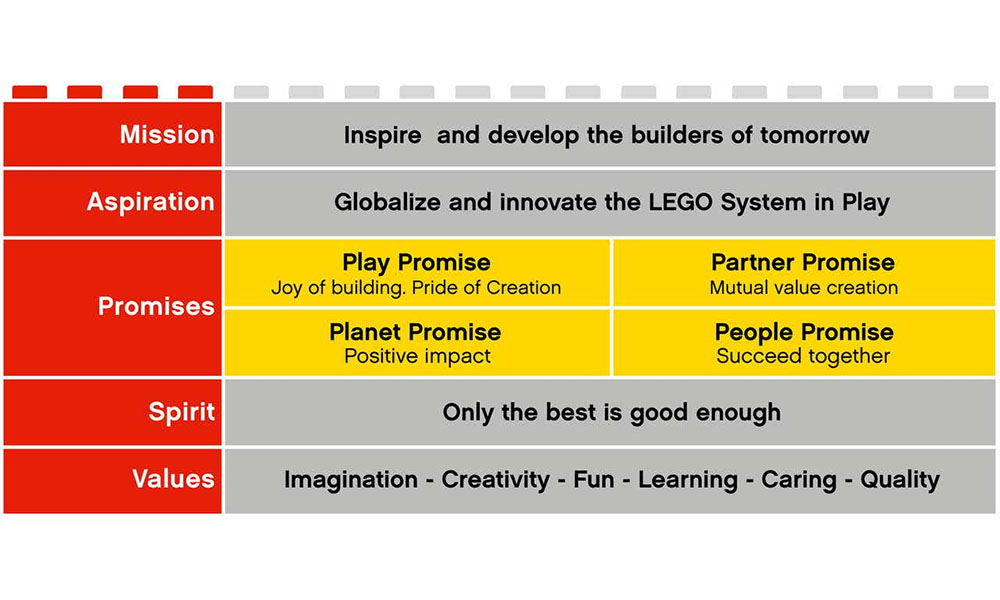 Source: Lego Brand Promise
Source: Lego Brand Promise
LEGO articulates perfectly the brand promise its toys deliver to their audiences: Joy of building, pride of creation. The company values are in step with this promise: Imagination, Creativity, Fun, Learning, Caring, and Quality.
With a clear articulation of its brand promise, LEGO employees are able to deliver the brand promise with products, services, and marketing activities that guarantee that children and their parents will experience joy and pride in connection with LEGO Bricks.
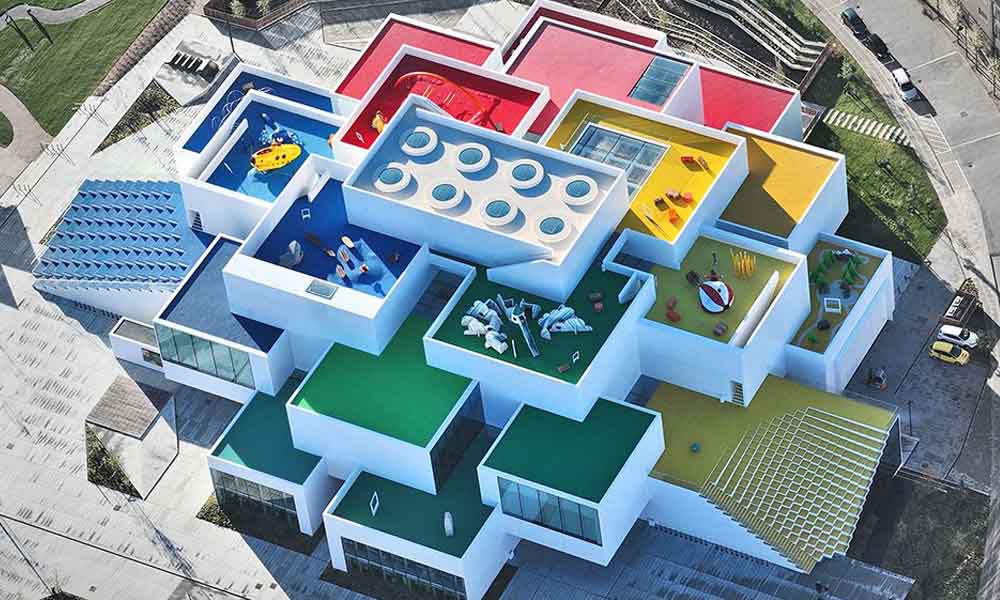
An aerial view of the Lego House in Billund, Denmark. Source: Lego House
One example that shows how LEGO House at Billund, Denmark, that was cleverly designed to appeal to kids and grown-ups. It is a 12,000-square meter house of fun, filled with 25 million iconic colourful building blocks. The House showcases LEGO creations by fans — and encourages visitors to create their own. There are two exhibition areas and four play areas which focus on creative skills, cognitive skills, social skills and emotional skills.
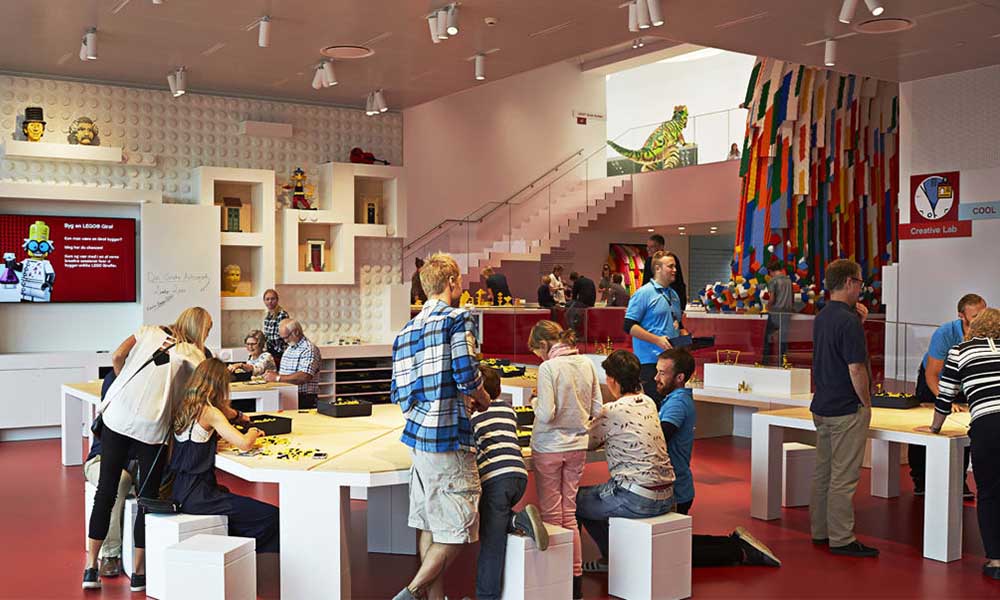
Source: Lego House Denmark
Watch:
Another example for Lego to connect with the kids, LEGO has launched LEGO® Life, a Free and Safe Online Community App for Kids in 2017. It is an online community for children to upload photos of their own LEGO creations, to get inspired, and engage with other children in an entirely kid safe platform. It reassures the parents that their kids are in a safe environment building LEGO and interacting with other kids on the platform.
To date, LEGO’s brand has gone from strength-to-strength, and has been ranked as the most powerful brand in the world in 2015 by leading brand valuation experts Brand Finance. This is due to LEGO knowing its target consumer well and providing something for everyone to experience joy with LEGO.
More videos:
Share this article
